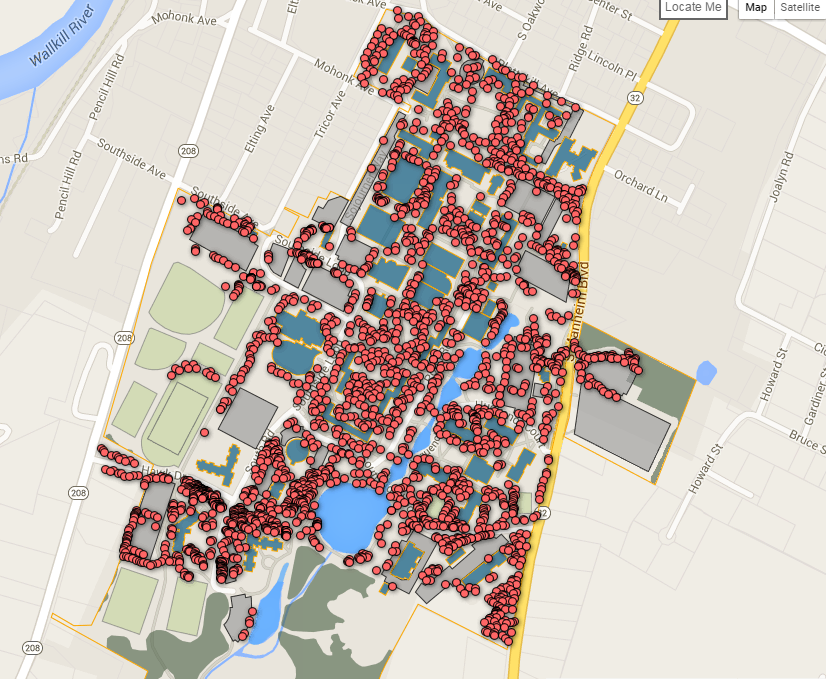The results of a tree inventory undertaken by students and faculty in the department of biology have been made public in the form of an interactive, online map containing locations and information about the nearly 2,500 trees on the SUNY New Paltz campus.

This powerful new tool for teaching, research and facilities management is the product of a collaborative effort led by biology faculty members Carol Rietsma and Eric Keeling. During the summer of 2014, Rietsma and Keeling worked with student Dakota Snyder ’15 (Biology) to locate, identify, measure and classify every tree sitting on actively managed campus land.
“Each tree got an individual number,” Rietsma said. “We recorded the time of day and the tree species if we could identify it, and we assigned each tree to one of four size classes. We also noted whether it had branches that were low enough to be reachable, because Eric and I wanted to know which trees could be used for demonstrations for students.”
“It was a lot of work, but it was really cool to be able to do fieldwork here on campus,” Snyder added.
On April 23 Keeling and Rietsma conducted a walking tour of campus trees with students, faculty, staff and community members as part of the spring 2015 Sustainability Meet-Up series. They explained some of the methods and shared the findings of the previous summer’s inventory, and offered suggestions for how campus trees and the new map can supplement normal classroom activities.
Keeling, for instance, uses the trees as living specimens for lessons in biology, ecology and phenology. “Ecologists need the field skill of being able to identify trees, and this new database makes developing that skill much easier for our students,” he said.
The map offers the added benefit of providing facilities operations staff with information about the number and variety of trees on campus, which can be used to help make decisions about future campus landscaping and development.
“If I wanted to request planting a kind of tree that I might be interested in taking students to, I would need to know first whether or not we had it,” Keeling said. “Now, that information is readily available.”
Likewise, the database also keeps track of whether a certain tree is the only one of its kind on campus, and is therefore deserving of extra care and protection.
Funding for this campus tree inventory and interactive map was provided by Campus Auxiliary Services (CAS) and allocated to the project by the Sustainability Committee. Josh Simons of the Center for Research, Regional Education & Outreach (CRREO) helped develop the map, which can be accessed at http://crreo.newpaltz.edu/trees/
“The biologists are truly leading the way in the campus-as-a-living-lab initiative,” said Lisa Mitten, campus sustainability coordinator. “My congratulations go out to Carol, Eric and Dakota.”
For more information about sustainability at SUNY New Paltz, please visit the Office of Campus Sustainability online.

